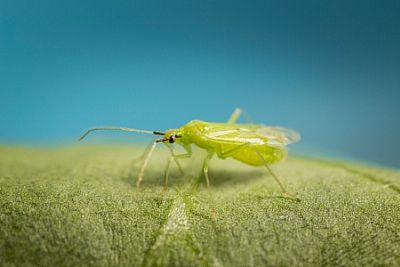MIRICAL / Macrolophus pygmaeus (form. Macrolophus caliginosus)
Predatory bug
Target
Use Mirical for biological pest control of all stages of:
-
greenhouse whitefly (Trialeurodes vaporariorum)
-
tobacco whitefly (Bemisia tabaci), especially the eggs and larvae
Mirical also targets:
-
Two spotted spider mites
-
thrips (including Echinothrips americanus)
-
eggs of butterflies
-
tomato leaf miner moth (Tuta absoluta)
-
aphids (lesser extent)
-
leaf miner larvae (lesser extent)
Packing
-
100 ml bottle, containing 500 nymphs mixed with wood chips and buckwheat
Dosage MIRICAL
|
|
Rate (ind./m2)
|
m2/ unit
|
Frequency
|
Interval (days)
|
Remarks
|
|
Preventive
|
0,25
|
2000
|
2x
|
14
|
-
|
|
Light curative
|
0,5
|
1000
|
2x
|
14
|
|
|
Heavy curative
|
5
|
100
|
2x
|
14
|
Introduce in
infested areas only
|
The information given below is merely indicative. Tailored advice can be provided if information is available on the local factors that need to be taken into account, such as the crop, the climate conditions and the level of infestation. For the correct approach, please consult a specialist of our company.
How does Mirical work
Adult predatory bugs and nymphs actively search for their prey and consume them. In case of whitefly eggs, larvae or pupae only the skin is left behind in its original form. Macrolophus can also survive on vegetable saps, however, this slows down the population build-up.
Application Mirical
-
Sprinkle material on clean, dry rock wool slabs, in Diboxes or on leaves. Make sure the material is not disturbed for at least a few hours
-
Introduce in clusters of at least 50 predatory bugs
-
Create 6-10 distribution points per bottle
-
Spread material thinly (maximum 1 cm thick) to enable the predatory bugs to get out of the carrier material
-
Use Entofood to provide a nutrient source in the beginning of the season, when in general pest pressure is low. This enhances development of Macrolophus.
-
After a few weeks Artefeed can also be used.
-
Use the peel-off label to mark where the product has been introduced
Best working conditions Mirical
Optimal temperatures for Mirical are above 20°C, lower temperatures slow down the development of Macrolophus pygmaeus significantly.
Handling
Biological beneficials have a very short life expectancy and therefore need to be introduced into the crop as soon as possible after receipt. Failure to do so can have a negative impact on their quality. In case you do need to store Mirical, please follow the instructions below.
Storage
-
After receipt: 1-2 days
-
Temperature: 8-10°C
-
In the dark (bottle horizontally)
Pesticides can have (in)direct effects on beneficials. Check here



 HellasSITES
HellasSITES